These Smart Light Bulbs Play Music, Boost Your Wi-Fi Signal, and More
As you probably know, LED bulbs are one of history’s greatest high-tech success stories. They use around 90 percent less electricity than incandescent bulbs, yet last 25 years or more. They turn on to full brightness instantly. They remain cool to the touch. They’re hard to break, and safety-coated if they do.
They also contain electronics — which has sent clever inventors into overdrive. Since the circuitry in an LED bulb can be made very tiny, that leaves a lot of space inside to add chips that connect these bulbs to your phone and your home network.
The smart-bulb revolution began a few years back, when companies started making bulbs that you can control with a phone app — turning on and off, dimming them, and even changing the color.
In the last few months, though, some even brighter ideas in light bulbs have heated up. Here’s what you have to look forward (or upward) to.
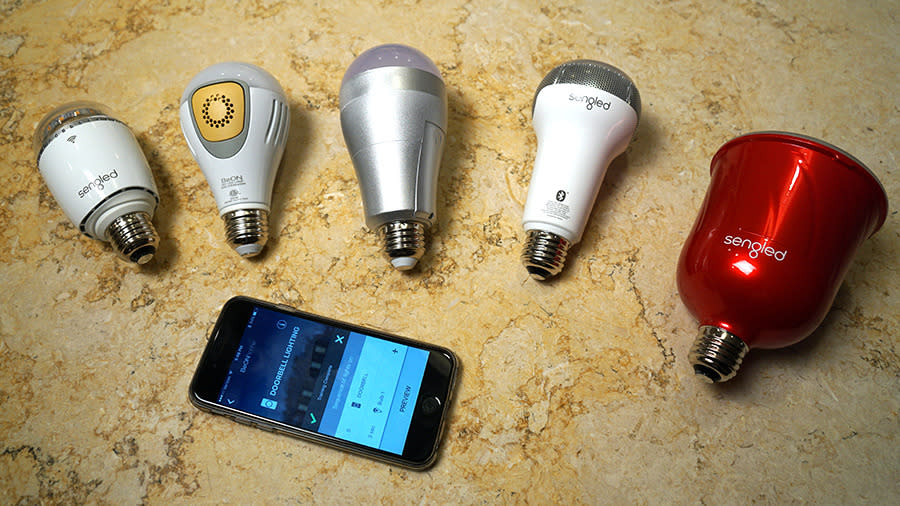
Light bulbs for power outages
The first SmartCharge LED bulb was a Kickstarter success story. And its technology is so amazing, you may not believe it.
At its heart, the SmartCharge 2.0 is a battery-backup bulb designed to work when your power goes out. It’s the size of a normal bulb, so you can screw it into any lamp or fixture. Compared with other smart bulbs, it’s refreshingly simple: There’s no Internet connection, app, control box, remote control, Wi-Fi, Bluetooth, or new wiring needed.
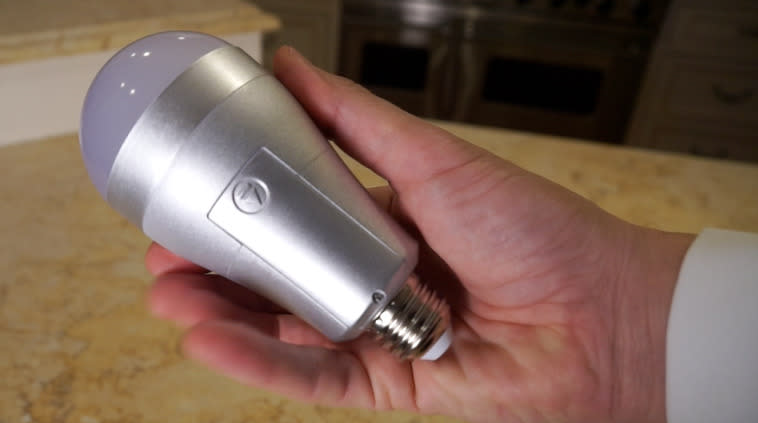
If the power ever goes out, the backup battery kicks in automatically; the bulb behaves exactly as it always has, for a total of 3.5 more hours of light. (The battery recharges whenever the power isn’t out.) Install a few of these, and you’ve performed your last frantic hunt in the dark for a working flashlight.
But here’s where your mind will fall apart. Read this slowly: You can still turn this bulb on and off from the wall switch, even when the power is out.
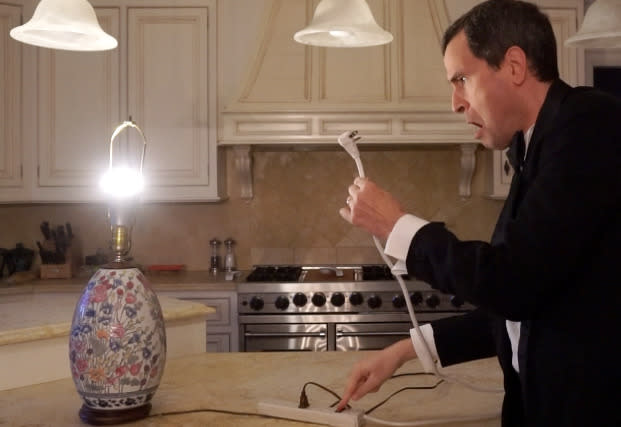
How the — ??
It seems like some hideous violation of the laws of physics, but it actually works, as you can see in my video above.
(How does it work? Something to do with checking the impedance of your house’s wiring. All I know is that the bulb doesn’t come on unless there’s at least one nonsmart appliance on the same circuit, like a normal light bulb. That’s why, in the video, you see a standard light bulb plugged into a second switchable power strip.)
You can buy the SmartCharge now, directly from its website, for $25 — or you can contribute to its Indiegogo crowdfunding campaign (which seeks money to expand distribution) and get four for $75. When it reaches stores in the spring, the SmartCharge will sell for $20. In any case, if you live in a place with occasional power outages, you’ll really love this thing.
Fine print: You have to change the battery about once every three years. The bulb can’t be dimmed or used in enclosed fixtures. It works in light fixtures where one switch controls many bulbs, as long as the bulbs are all LED. Wattage: 8 –11 watts, 650 lumens (roughly like a 60-watt traditional bulb). Color temperatures [choices coming in March]: 2700 to 5000 Kelvin (warm yellow-white to cool blue-white).
Light bulbs for home security
The BeOn bulbs were another Kickstarter success story. These Bluetooth bulbs have so much going on, you have to ask: How many engineers does it take to screw in a smart bulb?
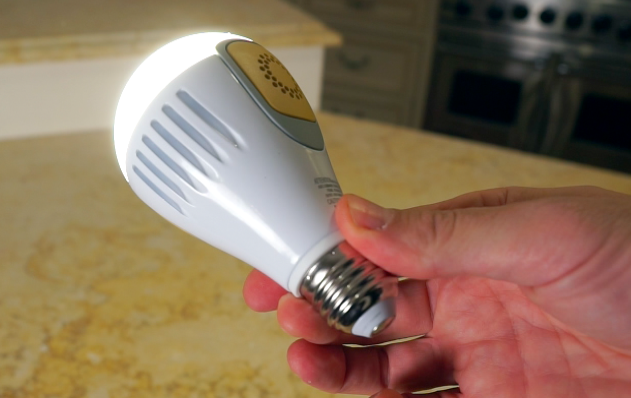
Anyway, here we go:
You can turn the bulbs on or off from the phone app. When you arrive home, you can turn them all on at once with one tap.
The built-in 4-hour battery can drive the bulbs when the power goes out, as with the SmartCharge (although you don’t get that cool wall-switch feature).
They dim slowly when you turn them off, so that you still have light as you leave the room.
They have microphones. You can train them to recognize the sound of your doorbell (by ringing it three times), and to turn on in response — a burglar deterrent. In fact, you can program several to turn on in a sequence — upstairs first, then the stairway, then the living room — to make it look like you’re making your way to the front door.
Similarly, you can train them to turn on in response to the sound of your smoke alarm or carbon monoxide alarm.
This is cool: The BeOn bulbs quietly learn the pattern of your turning them on and off throughout the day and night. Then, when you flip them into Away mode (when you’re out of town, for example), they play back those on/off sequences automatically, again in an effort to fool would-be intruders.
Here again, the magic lies in the simplicity of the hardware. You just screw these bulbs into existing lamps or fixtures. You don’t have to rewire anything or install any control box; the bulb is self-contained.
(Each bulb has a removable battery/circuitry brain module. The company says that someday you may be able to add new features by upgrading the brain modules.)
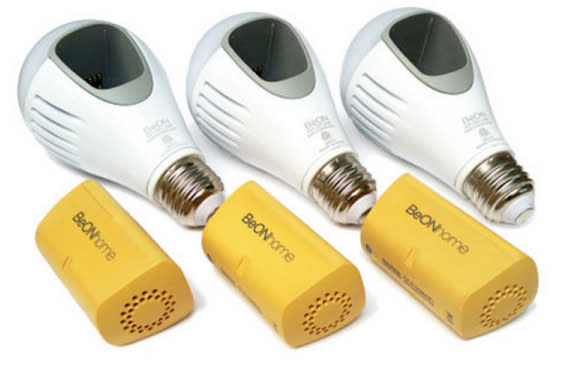
The app, however, is not a model of simplicity. It’s downright baffling, actually. (For example: When you turn on Away mode, the Back button and the main dashboard screens disappear. Why? Because, the company says, in Away mode, the other features aren’t available; all the bulbs do is turn on and off to fool burglars. Oh.)
There’s no user guide in the box, either. There’s some how-to stuff on the website, but it’s not very user-friendly.
Fine print: Consumption, 13 watts. Color temp: 3000 Kelvin (soft warm white light). Brightness, 800 lumens (slightly brighter than a 60-watt bulb).
Light bulbs for music
The best idea ever: Build Bluetooth speakers into your light bulbs!
Now, the sound source is out in the middle of the room instead of cowering in a corner. You never have to charge the thing. There’s not a single new wire trailing anywhere — in fact, there’s no new clutter of any kind. It’s hilarious to see visitors to your house secretly peeking around to see where the sound is coming from.
The Sengled Pulse costs $150 a pair and sound pretty darned good — not as good as, say, an Amazon Echo, a Sonos, or a real sound system, but about like other good Bluetooth speakers. The Pulse plays whatever your phone (or computer) is playing, in stereo. You can rig your house with as many as eight of these bulbs, all controlled by a phone app.

Note that if you buy the pair, you get a “master” bulb and a “satellite.” (Only the master pairs to your phone by Bluetooth.) You can add more satellites, up to seven total ($70 each). You can also buy a $40 adapter for your subwoofer, which makes the bulbs sound a lot better.
If you buy multiple masters, you can have different sound systems in each room of the house, each playing different music from different phones. Whole-house audio with no wires? Not too shabby.
You can turn the bulbs on or off, or dim them, or adjust their volume, from the phone app.
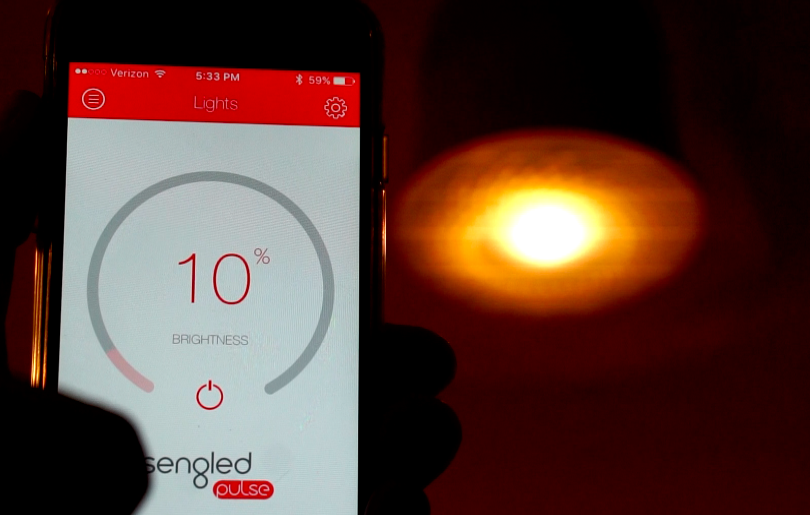
The bulbs are big, though. They work great in ceiling cans, but probably won’t fit in most lamps. The Bluetooth range isn’t fantastic, either — about 30 feet, tops; beyond that, the music stops.

And here’s the thing: If you cut the power by turning off the light switch, the music stops, too. If you want to turn off the light without stopping the music, you can do so with your phone app, but that’s a hassle.
Fine print: 1.75-inch JBL speaker in each bulb. Brightness: 600 lumens. 13 Watts @ 8ohms; 100Hz-20kHz frequency response. Consumption: 15 watts, including both light and sound. You can dim the bulbs with your app, but not with dimmer switches.
Light bulbs for music, part 2
The same company, Sengled, also makes a standard-sized light bulb called the Pulse Solo ($53). It doesn’t team up with other bulbs, as its big brother does — it’s a solo operator — but each one contains two one-inch speakers, so it’s supposedly stereo.

You don’t really hear stereo, though; the speakers are too close together. Note, too, that the sound is only a little better and richer than what comes right out of your phone; the whole thing is just too tiny. (Putting it in an overhead fixture helps, both with sound and light.)
Fine print: Consumption is 12.5 watts (light + music). Light: 500 lumens, 2700K (warm white). Speakers put out 3 watts at 8 ohms, 260Hz-18KHz frequency response.
Light bulbs as Wi-Fi extenders
Oh man, why hasn’t anyone else thought of this?
Millions of us complain about the Wi-Fi coverage in our homes. It’s great if you’re near the router, but once you’re through a few walls, forget it.
There is such a thing as a Wi-Fi repeater or extender, which grabs the fading signal and rebroadcasts it, giving it a boost. But those things are ugly, they spew even uglier wires, they require a power outlet, and they have to sit out in plain view.
But if you built that circuitry into a light bulb? Genius!
You can now put the repeater anywhere. Nobody will see it, and it gets all its power from the light socket.
This is the genius of the Sengled Boost bulb ($50).
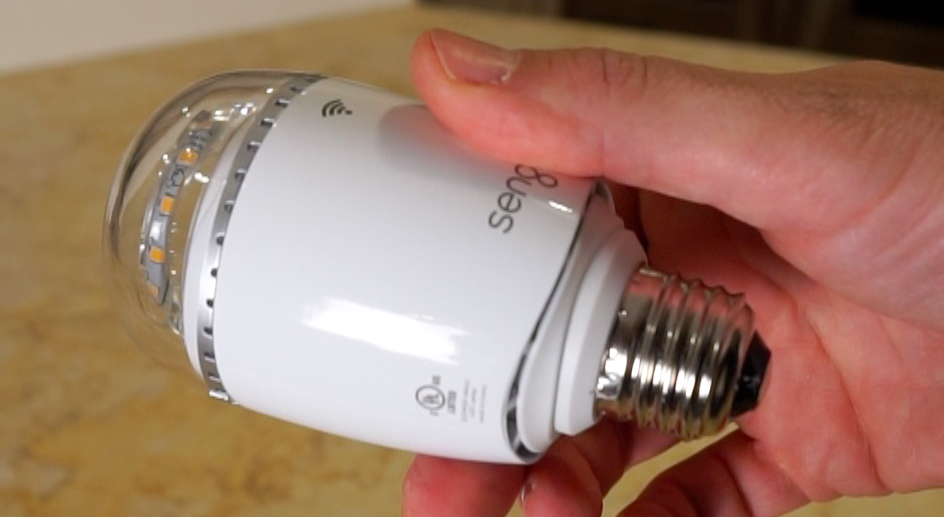
Now, as with Sengled’s music bulbs, turning off the light switch cuts power to the whole thing — you lose both light and Wi-Fi. You can keep the Wi-Fi signal going without the light, but only if you use your app to turn off the light. That requirement may be annoying, or it may be a complete deal-killer.
The Boost works, but not fantastically; it stretches the Wi-Fi signal another 100 feet under the best of circumstances (no obstructions). And it doesn’t take advantage of the latest high-speed Wi-Fi technology, 802.11ac, which operates at 5.0 gigahertz; it only works with 2.4 gigahertz networks.
The beauty of it, though, is that you could get two, three, or four of these things, and daisy-chain their boosted signal to thread your Wi-Fi signal into exactly the rooms where you need it.
Fine print: Brightness: 550 lumens, color temperature: 3000K (warm white). Dimmable using the app, not using wall switches.
The future looks bright
The SmartCharge bulbs, BeOn security bulbs, and Pulse speakerbulbs are all useful, ingenious gizmos that will make you happy. The Pulse Solo and Boost bulbs aren’t such home runs.
But remember: We’re still living at the very dawn of the smart bulb. These bulbs may be a prime example of what people mean by “Internet of Things,” but on the bigger timeline of progress, they’ve only just begun to shine.
Now read these great Yahoo Tech stories:
Facebook’s New Music Stories Bring Music Sharing to the Social Network
Wave Your Phone in the Air: How Technology Is Changing Live Music
After One Month With Apple Music, I’m Ready to Ditch Spotify
David Pogue is the founder of Yahoo Tech; here’s how to get his columns by email. On the Web, he’s davidpogue.com. On Twitter, he’s @pogue. On email, he’s poguester@yahoo.com. He welcomes nontoxic comments in the Comments below.

